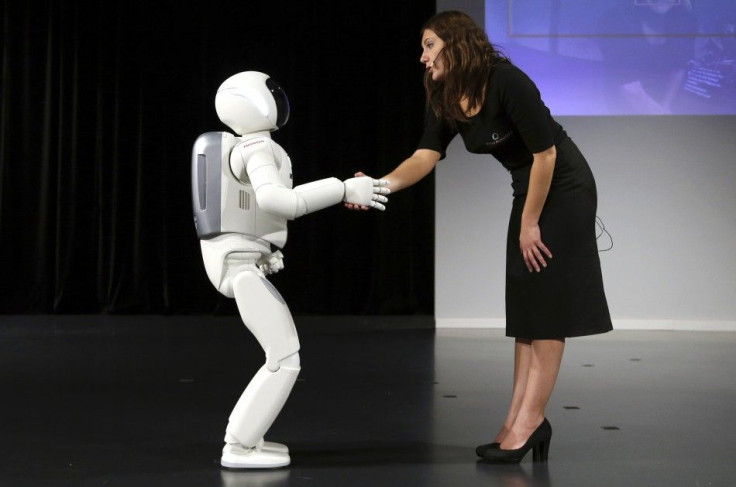ASIMO, World's Fastest Humanoid Robot Learns Sign Language
The Life Like Bot Can Recognize Voices And Communicate Through Sign Language As Well

Honda's iconic white android, ASIMO, has stunned robot enthusiast's world over. Though it looks similar to other models, the humanoid robot can run and walk with ease. It almost seems like a human being inside the robotic suit. It is the world's most advanced humanoid robot.
ASIMO, an acronym for Advanced Step in Innovative Mobility, was thought of and well created by Japanese engineers has only been improving greatly ever since it was born, 14 years back. This electrical engineering genius has never failed to stun its viewers, though there was an instance of the robot failing, the present progress displayed during a demonstration this week in Brussels, Belgium, has changed the opinion of the viewers.
The 4.2-foot-tall humanoid, after the newest developments, has become faster from 3.7 mph to 5.6 mph; its running style has also become smooth and graceful. Satoshi Shigemi, the robot's lead developer, said that the little robot has advanced from an "automatic machine" to an "autonomous machine." It has even beaten its own world record for a humanoid robot's running speed, now clocking in at 9 kilometres per hour.
ASIMO stunned the viewers with its latest technology that allowed it to recognise different voice tones and differentiate each when several persons spoke simultaneously, responding well to different instructions given by each person. What's more is that the bot has learned sign language and can communicate through it.
"Previous generations of ASIMO have demonstrated incredible fluidity and speed of movements. The all-new ASIMO takes this mobility, task performing ability and interaction with people to the next level and moves Honda one step closer to its ultimate goal of developing a robot that can be a helper to people in need," said Satoshi Shigemi.
The team has planned to use ASIMO's capabilities for other applications, including robotic prosthetics.
Video credits: New Scientist






